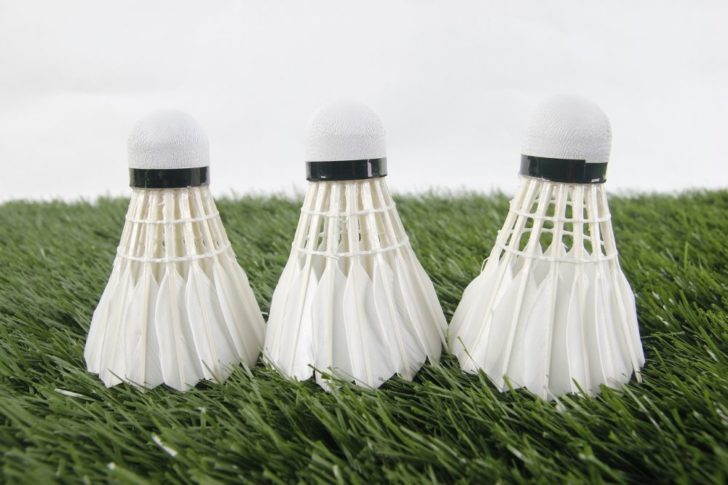Badminton Racket: The Ultimate Guide to Choosing the Perfect One

Introduction
A badminton racket is a crucial equipment for every badminton player. It plays a significant role in determining the player’s performance and style of play. In this comprehensive article, we will delve into the intricacies of badminton rackets, exploring their types, popularity, quantitative measurements, differences, and historical analysis of pros and cons.
1. Overview of Badminton Racket

A badminton racket is a lightweight sports equipment used in the game of badminton. It consists of a frame, a stringed base with a grip, and a head. The racket’s frame is usually made of lightweight materials such as graphite, carbon fiber, or aluminum, which enhances maneuverability and power.
2. Types and Popularity of Badminton Racket
There are various types of badminton rackets available in the market, each designed to cater to different playing styles and player preferences. Some popular types include:
a) Control Rackets: These rackets provide excellent control and accuracy, making them ideal for players who rely on precise shots and tactics rather than power.
b) Power Rackets: Built to generate maximum power, these rackets are favored by players who rely on powerful smashes and aggressive shots. They have a stiff frame and a head-heavy balance.
c) All-Round Rackets: These rackets strike a balance between control and power, catering to players who want versatility in their game. They are suitable for both attacking and defensive play.
d) Beginner Rackets: Specifically designed for beginners, these rackets offer a larger sweet spot, forgiving errors, and providing stability.
3. Quantitative Measurements of Badminton Racket
To understand the performance characteristics of a badminton racket, various quantitative measurements are considered:
a) Weight: Badminton rackets typically weigh between 80-100 grams, with lighter rackets offering increased maneuverability and heavier rackets providing more power.
b) Balance Point: The balance point of a racket determines its overall feel during play. Head-heavy rackets offer more power, while head-light rackets provide better control.
c) Flexibility: Rackets have varying degrees of flexibility, ranging from extra stiff to extra flexible. Stiffer rackets provide more power, while flexible rackets offer more control.
4. Differences between Badminton Rackets
Badminton rackets differ in several aspects that influence their performance:
a) Frame Shape: Rackets can have isometric or oval-shaped frames. Isometric frames offer a bigger sweet spot and provide more consistent performance across the strings.
b) String Tension: Higher string tension increases power and control but requires more technique to use effectively. Lower string tension offers more forgiveness but sacrifices precision.
c) Grip Size: Rackets come in various grip sizes to accommodate different hand sizes. A comfortable grip promotes better control, preventing the racket from slipping during intense play.
5. Historical Analysis of Badminton Rackets
In the early days, badminton rackets were made of wood, such as ash or oak. These rackets were heavier and had smaller heads, limiting power and control. With advancements in technology, materials like graphite and carbon fiber were introduced, revolutionizing the game. Lightweight and powerful rackets became the new norm, enhancing players’ performance.
However, the shift towards more power-focused rackets also posed challenges for players who relied on finesse and control. This led to the diversification of racket types, providing a wide range of options for players with different playing styles.
Conclusion
Choosing the right badminton racket is crucial for players at all levels. Understanding the types, measurements, differences, and historical development of badminton rackets empowers players to make informed decisions based on their playing style and preferences.
Whether you prefer a control racket for precise shots or a power racket for explosive smashes, there is a badminton racket that suits your needs. Embrace the versatility and advancements in technology, and elevate your badminton game with the perfect racket.
FAQ
What are the different types of badminton rackets available?
How does the weight of a badminton racket affect gameplay?
What factors should I consider when choosing a badminton racket?
Flere nyheter
Elektriker i Molde: Et lyspunkt i byens elektriske landskap
Introduction A badminton racket is a crucial equipment for every badminton player. It plays a significant role in determining the player’s performance and style of play. In this comprehensive article, we will delve into the intricacies of badmi...
09 desember 2025
Søk lærlingplass i Finnmark: Veien til fagbrev og første jobb
Introduction A badminton racket is a crucial equipment for every badminton player. It plays a significant role in determining the player’s performance and style of play. In this comprehensive article, we will delve into the intricacies of badmi...
08 desember 2025
Tannlege i Kolbotn: Slik velges kompetanse, pris og trygghet
Introduction A badminton racket is a crucial equipment for every badminton player. It plays a significant role in determining the player’s performance and style of play. In this comprehensive article, we will delve into the intricacies of badmi...
08 desember 2025
Face formula: Hudpleie som jobber med huden, ikke mot den
Introduction A badminton racket is a crucial equipment for every badminton player. It plays a significant role in determining the player’s performance and style of play. In this comprehensive article, we will delve into the intricacies of badmi...
08 desember 2025











